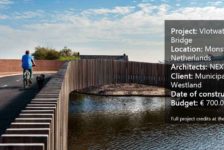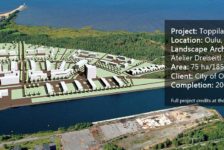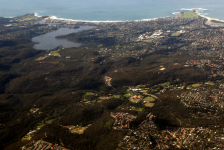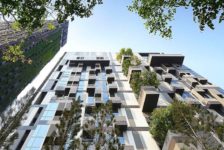Article by Eleonora Fiorin – Total reading time 4 minutes Pavilion for the Nature Concert Hall, by Architecture office DJA (Didzis Jaunzems Architecture), in Gauja National Park, Sigulda, Latvia. Sometimes, architecture breaks its boundaries and combines its identity with other human expressions to reach a higher level of communication with our sensibilities. This is the case with the Nature Concert Hall pavilion in Sigulda, Latvia. As we inquire into this construction, we will face something more: an idea revealed in an atmosphere, an experience realized only because of people believing in it, that goes beyond simple architecture. It has something to teach us. Nature Concert Hall 2005 is a non-profit organization whose aim is to create occasions, interactive events, and shows to help people understand and reconnect with nature. The association is trying to offer not only a classical educative approach, but a strong and sensitive life experience.
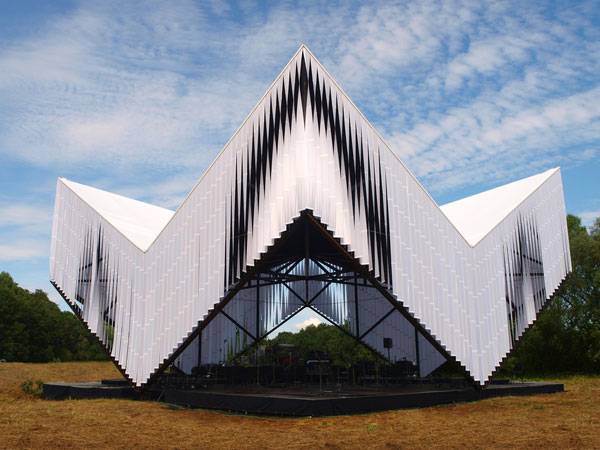
Pavilion and Workshops for Nature Concert Hall. Photo credit: Ernests Sveisbergs
Pavilion and Workshops for Nature Concert Hall
Every summer the group organizes multimedia, nature-educational events incorporating science, theater, music, and arts with different characteristics according to the theme of each year. To do so, they provide exhibitions, lectures, and — of course — buildings. The pavilion we are talking about here was designed and constructed by Didzis Jaunzems and Klinta Pickaine in 2014, and can be reasonably considered the architectural concretization of the spirit of attention, appurtenance, and deep feeling that should connect us to the environment that surrounds us.
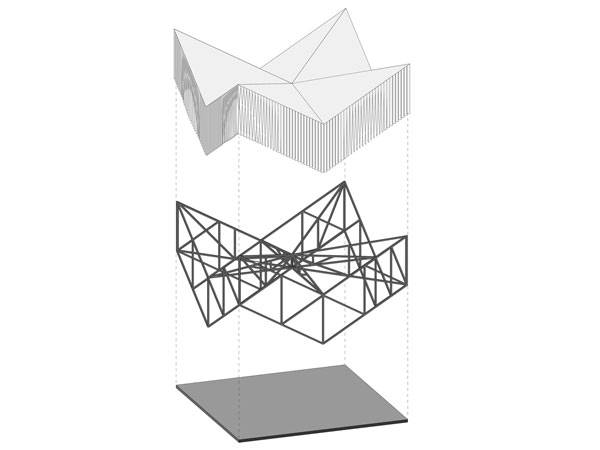
Diagram of the structure of the Pavilion and Workshops for Nature Concert Hall. Image courtesy of DJA
The first strong impression it gives concerns how the volume is clearly recalling nature — not imitating living shapes and surfaces the way organic architecture usually does, but in a critical and honest way referring to the crystalline structure of a plant’s basic cells. This proposition goes beyond the pure appearance, straight to the meaning and to the crux of the message they want to give.
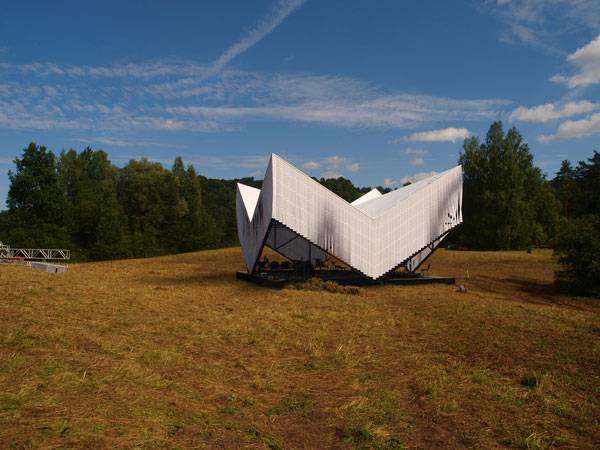
Pavilion and Workshops for Nature Concert Hall. Photo credit: Ernests Sveisbergs
The structure itself is simple and practical: The system is modular, so it can be arranged in different combinations, giving the architecture an extra capacity of expression according to the intent of each project.
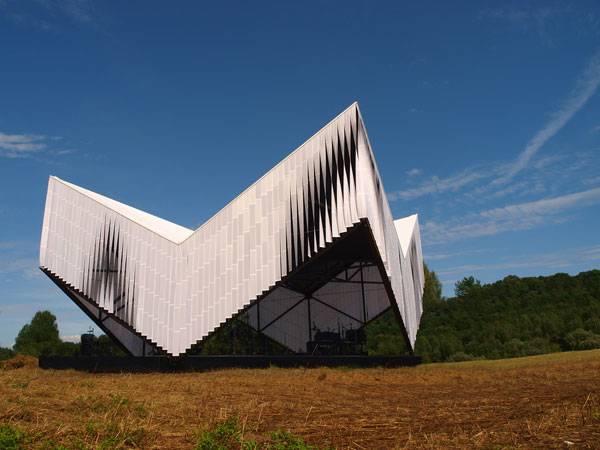
Pavilion and Workshops for Nature Concert Hall. Photo credit: Ernests Sveisbergs
The facade appears as a light and smart skin, made up of vertical fabric bars that can be mechanically rotated in order to obtain the maximum flexibility of the surface drawing. This method allows performers to play with transparency, shadows, and motifs. Like in music, that is the main protagonist of the scene — the pavilion is fluid and mutable; there is not a unique and determined way to perceive it. Light and the wind play with the building, giving you a sense of freedom and natural flow that is well connected with the openness and the breath of the forest, a natural dynamism involving artificial elements, too.
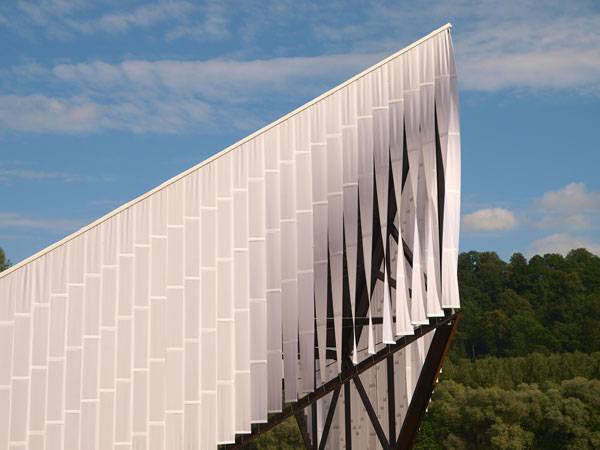
Pavilion and Workshops for Nature Concert Hall. Photo credit: Ernests Sveisbergs
Light and the wind play with the building, giving you a sense of freedom and natural flow that is well connected with the openness and the breath of the forest, a natural dynamism involving artificial elements, too.
A Landmark for the Area The pavilion is a kind of landmark for the area. It contrasts with the flatness of the surrounding landscape, creating a strong relationship with the protected biotype of Gauja Natural Park. This can be better understood focusing on the way the structure touches the ground and in the points of contact: The number of those points is reduced to the minimum.
More About the Site Gauja Natural Park is the largest and oldest of the national parks in Latvia, and it used to be the stage for several cultural activities. In the valley of Sigulda, chosen area for the project, we can admire a varied natural environment, with large oaks, aspen, and ash together with the dominant type of the pine forest. The field occupied by the concert hall is an open clearing, a homogenous place. It seems like a place to rest in the middle of the dense forest, in which the architectural object is attached in the center, as a holy artefact isolated but coherent with the surroundings. Due to the composition of the facade and the images that can be projected on it, it can be characterized by “natural shadows” that link nature and architecture and give the concert hall the power to catch your attention.
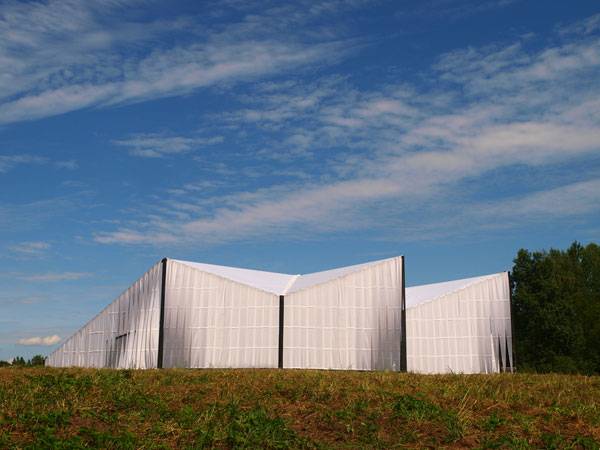
Pavilion and Workshops for Nature Concert Hall. Photo credit: Ernests Sveisbergs
The building belongs to the place because of its meaning, which is its function as well: to explain the environment around it. Function, meaning, and architecture are linked together through the same expression. Every compositional choice is addressed to the same aim. Architecture is a very concrete and material way of communication, so it is surprising to realize how the pavilion is, in this case, fundamental without being the protagonist. The fact that its surface is a screen is proof that this unselfish construction is more about content than structure.
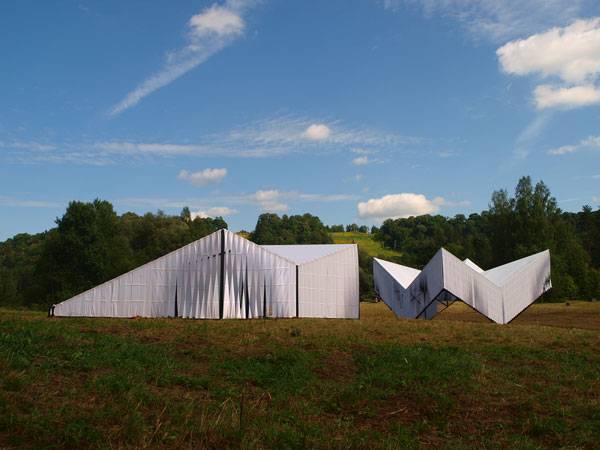
Pavilion and Workshops for Nature Concert Hall. Photo credit: Ernests Sveisbergs
Even if we could perceive a strong idea of sculpture, we notice that the roof is not visible from a human’s point of view. It is only once inside that you perceive it and its protection. The main task of architecture — to provide protection by giving a roof — is here apparently denied, to benefit a different perspective and meaning. The Natural Concert Hall pavilion is difficult to decode in all its potential, but at the same time has the strength of a clear and decisive message: Its main function is to have and show a meaning. Every choice of the designers contributes to this.

Pavilion and Workshops for Nature Concert Hall. Photo credit: Ernests Sveisbergs
The pavilion is as temporary as the experience that it represents, yet strong and unusual to reach people’s minds and build in a coherent way to the approach that the organization is promoting through nature: respect, mutual valorization, harmony, and deep understanding without losing its identity. Every year, you have the opportunity to have this amazing experience and become one with nature. Do not forget — this particular project is done in conjunction with people and their feelings and beliefs: It needs you to make it work.
Go to comments
Full Project Credits For the Pavilion for the Nature Concert Hall:
Project Name: Pavilion and Workshops for Nature Concert Hall Location: Gauja National Park, Sigulda, Latvia Client: Association “Nature Concert Hall” Project Author: Architecture office DJA (Didzis Jaunzems Architecture) – Didzis Jaunzems, Klinta Pickaine Area: 150 square meters Year: August 2014 Engineers: “Veldrums and Partners” Ltd. Builders: „Hanza Film Service” Ltd. Photos: Ernests Sveisbergs Recommended Reading:
Article by Eleonora Fiorin
Published in Blog











